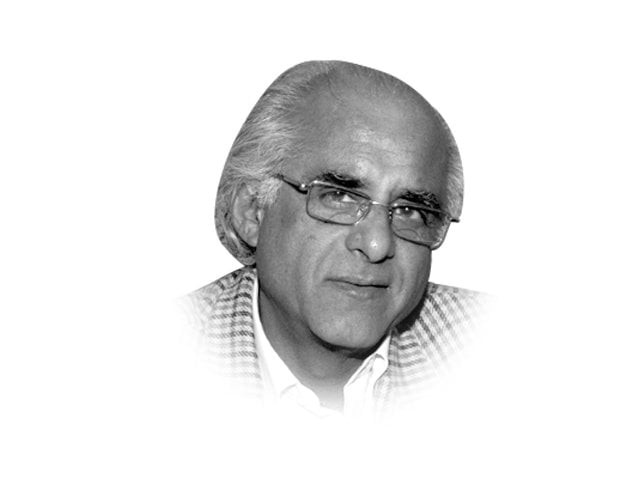The Chachnama
In 1216, Ali bin Mohammad Kufi, wishing to learn about the history of Sindh sought out true sources & wrote the book.

The writer is author, most recently, of The Apricot Road to Yarkand (Sang-e-Meel, 2011) and a member of the Royal Geographical Society
salman.rashid@tribune.com.pk
His search brought Kufi to Bhakkar (the fort midstream between Sukkur and Rohri) where the Qazi, Ismail bin Ali of the tribe Sakifi became his mentor. Among his collection, the Qazi had a manuscript that he said was written by one of his ancestors and which detailed the account of Sindh at the time of the Arab invasion. Now, Sakifi was the tribe that MbQ also belonged to, so the Qazi was a descendent from the conqueror’s line. The book, therefore, was the version of the victor — something that we always tend to hold against history.
Impressed by the book “adorned with jewels of wisdom and embellished with pearls of morality”, Ali Kufi resolved to translate it into Persian, then a better known language in Sindh than Arabic. Indeed, Kufi’s impetus may have been Qazi Ismail’s lament that the book being in its original Hijazi Arabic, its content was virtually unknown in Sindh.
It was from Persian that the book came into English in 1900, by the learned pen of the remarkable Mirza Kalich Beg. The Chachnama opens with a very detailed account of the Rajput King, Sahasi Rai, and of a young Chach, a Brahman, joining his staff. The author’s source for this part was clearly native oral or written tradition, whereas the account of the invasion is from Arabic sources.
Segueing again at the end, Ali Kufi reverts to local sources. He tells us how the virgin daughters of Raja Dahar upon being presented to Caliph Walid bin Abdul Malik misrepresent out of malice: that they have already spent time with MbQ. Upon this, the incensed caliph orders for the hero to have himself sewn in a fresh cowhide and dispatched back to the capital. He arrives dead and Walid gloats over the corpse. “The Caliph had a stick of green emerald in his hand at that time, and he placed it on the teeth of the dead body, and said, “O daughters of Rai Dahar, look how our orders are promptly obeyed by our officers ...”’, the Chachnama tells us.
This is clearly a Sindhi dramatisation of a different event. From Ahmed Al Bilazri’s Futuh-ul-Baladan we know that upon his return to Iraq, MbQ hardly received a hero’s welcome. His kinsman and mentor Hujaj bin Yusuf had fallen from favour and on the orders of Walid, MbQ was imprisoned where he succumbed to torture. Sifting between the two versions, one has to admit that it is nearly impossible to piece together the exact truth. Nevertheless, it is clear that owing to political rivalries, the young conqueror did not return home to accolades.
Now, the Chachnama has been billed variously, either as a romance or as authentic history. We know that Mir Masum Shah, the governor of Bhakkar (where Ali Kufi was tutored by the Qazi) during the reign of Akbar the Great, writing his famous Tarikh-e-Masumi in the early years of the 17th century, drew heavily from Kufi’s translation. Likewise, Ali Sher Qanea of Thatta for his Tuhfa-tul-Kiram, a century-and-a-half later. Modern researchers would not altogether dismiss the Chachnama as balderdash: it has to be looked at critically but it, nevertheless, is authentic in parts.
Until I read the book in 1984, I, too, believed that the Arabs invaded Sindh because a ship en route from Serendip (Sri Lanka) to Arabia was plundered by Sindhi pirates and the wailing of the captive Muslim women passengers raised the ire of Hujaj bin Yusuf, the governor of Iraq, causing him to send his cousin MbQ to teach the Sindhis a lesson.
The truth, and it has to be taken as that because it comes from the pen of a kinsman of MbQ’s, is that this invasion of Sindh in 711 was the sixth. Five earlier attempts were routed with great loss of Arab life and investment.
Published in The Express Tribune, January 19th, 2013.















COMMENTS
Comments are moderated and generally will be posted if they are on-topic and not abusive.
For more information, please see our Comments FAQ